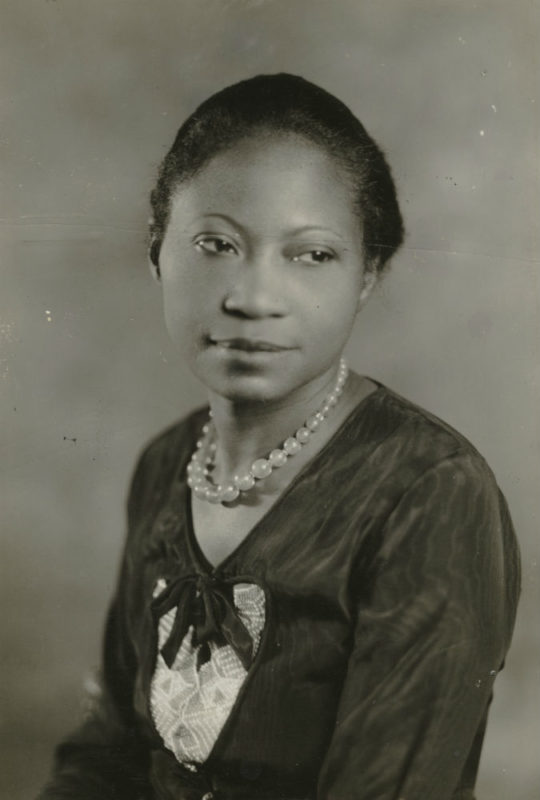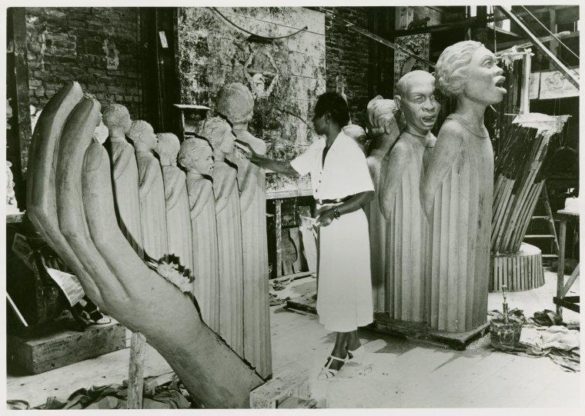WRITTEN BY SASHA KUNTSEVICH, MARKETING INTERN

Augusta Savage (1892 – 1962) was an internationally renowned African American sculptor in the 1920s and 1930s. Born in Green Cove Springs, Florida she and her family moved to West Palm Beach. In 1919, she entered the West Palm Beach County Fair, and her work was awarded a special prize. As a result, Savage was encouraged to pursue her art career. She moved to New York and enrolled at the Copper Union School of Art. During her time in New York, Savage sculpted Gamin, which is thought to be a portrait bust of her nephew. Savage was awarded a Julius Rosenwald Fellowship to study in Paris in 1929.

Augusta Savage (American, 1892 – 1962), ‘Gamin’, c. 1930, painted plaster, Purchased with funds from the Morton R. Hirschberg Bequest, AP.2013.1.1
When she returned to New York, she established the Savage Studio of Arts and Crafts in 1932 and became an inspiring and influential teacher in Harlem. In 1934, she became the first African American member of the National Association of Woman Painters and Sculptors. Following her appointment as the first director of the Harlem Community Art Center, Savage was commissioned by the 1939 New York World’s Fair to create a sculpture, which is considered one of her most important and significant pieces. Titled The Harp, it was inspired by the lyrics of James Weldon Johnson’s poem, Lift Every Voice and Sing. Sadly, due to a lack of funding, she was not able to cast the completed sculpture in bronze, and its original plaster version was destroyed at the close of the fair.

Augusta Savage at work on ‘The Harp’, 1935-1945, New York World’s Fair (1939-1940). Photographs and Prints Division, Schomburg Center for Research in Black Culture, The New York Public Library, Astor, Lenox and Tilden Foundations.
Savage taught children throughout her career and considered them hope for the future. She has been quoted saying, “I have created nothing really beautiful, really lasting, but if I can inspire one of these youngsters to develop the talent I know they possess, then my monument will be their work.”
Gamin, which is part of the Cummer Museum of Arts & Gardens’ permanent collection, was a pivotal piece in Augusta Savage’s career. In this bust, the artist cleverly captures her subject’s personality. This sculpture is also important because it depicts a Black youth in a humane way, challenging the visual culture of the period that presented African American children as dirty and ragtag.
The Diving Boy was owned by Museum founder Ninah Cummer, where it was originally placed at one end of a reflecting pool in Mrs. Cummer’s Italian Garden. It is typical of Savage’s interest in combining realistic details with powerful expressiveness.

Augusta Savage (American, 1892 – 1962), ‘The Diving Boy’, c. 1939, bronze, 32 ½ in., Bequest of Ninah M. H. Cummer, C.0.602.1


